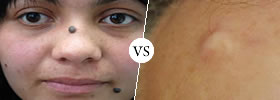Difference between Taekwondo and Aikido
Key difference: Origin wise, Taekwondo is a Korean martial art form, and Aikido is a Japanese martial art form.
.jpg) “Taekwondo” is a Korean form of martial art form, practiced as a sport as well. It was originated in the South Korean region. Today, it is practiced as a sport in 184 countries, comprising 60 million of practitioners. It is simply a way of foot and fist actions used for self- defense.
“Taekwondo” is a Korean form of martial art form, practiced as a sport as well. It was originated in the South Korean region. Today, it is practiced as a sport in 184 countries, comprising 60 million of practitioners. It is simply a way of foot and fist actions used for self- defense.
The word “Taekwondo” is derived from the Korean words:
"Tae"- foot
"Kwon"- fist and
"Do - way of
Taekwondo is now the most well-known martial art forms and is encouraged and practiced in several parts of the world. It is said to be "The art of Kicking and Punching" or "The art of unarmed combat". It basically emphasizes more on the fist and foot actions and comprises of fast and quick spinning kicks. Today, it is a flourishing sport form in Korea, and has a defined position in the modern martial art forms in Olympics. It has two main styles; its one style is practiced by International Taekwon-Do adherents and the other is derived from Kukkiwon, the source of the sparring system sihap gyeorugi. The traditional Taekwondo typically relies upon the martial art forms, which were established in the 1950s and 1960s in the South Korean military. It was also practiced in various civilian organizations, including schools and universities.
.jpg) “Aikido” is a Japanese martial art form, also generally practiced for gaining harmony and peace. It is self-defense method, which was founded late back by Master Morihei Ueshiba (1886-1969). It is soft and neutralized form of martial art.
“Aikido” is a Japanese martial art form, also generally practiced for gaining harmony and peace. It is self-defense method, which was founded late back by Master Morihei Ueshiba (1886-1969). It is soft and neutralized form of martial art.
The name “Aikido” in Japanese is made up of three characters called kanji.
Ai – joining, unifying, combining, fit
Ki – spirit, energy, mood, morale
Dō – way, path
Aikido is actually the most dangerous form of martial art, but is practiced in a neutral and soft form. The art form provides the physical and psychological balance to an individual. In Aikido, the motive is never to hurt the opponent. Aikido is performed with the help of blending moves and actions, and the twist, turns are conducted in accordance to the opponents move and action. It is more of a physical form of martial art, which includes the techniques of gaining energy and harmony. In Aikido, the violent aggression is neutralized swiftly and cleanly. The self-defense actions are effective and performed without causing any injury to the opponent. It comprises of footwork, which are practiced in a linear and circular manner. These actions off-balances the attacker and apply the joint-locking or throwing techniques. At the highest levels, it is an effective discipline for the development, integration, and utilization of one's powers, which comprises of both mental as well as physical states.
Comparison between Taekwondo and Aikido:
|
|
Taekwondo |
Aikido |
|
Translations |
“The art of Kicking and Punching” or “The art of unarmed combat” |
“The way to union with universal energy” or “The way of unified energy” |
|
Origin |
Korean |
Japanese |
|
They are |
Taekwondo is both, a hard type of martial art and a combat sport. |
Aikido is a soft type of martial art. |
|
Consists |
It is primarily a kicking martial art, which comprises of various kicks and blocks. |
It is based on the idea of using the opponent’s momentum against them by deflecting attacks and throwing them. |
|
Forms |
It is modern form of martial art as well as a combat sport. |
It is the most practiced traditional form of martial art form. |
|
Response and attacks |
There are continuous kicks associated with the actions. |
The actions are dependent on the opponent’s responsive actions and attacks. |
|
Attacks |
Here, the attacks are not neutralized. |
Here, the attacks neutralized, with a motive of not hurting the opponent. |
|
Harmony |
It is not concerned with peace and harmony. |
It is generally practiced for gaining peace and harmony. |
|
Based on |
It is based on attacking with strikes. |
It is mainly defensive |
|
Use of |
It is purely based on bare hand strikes. |
Apart from the bare hand practice, there is also the use of various weapons like sword and staff. |
|
Actions |
Here, the opponents are strike each other, mostly with kicks to the upper part of the body (as per the sport rules forbid kicks below the belt). |
Here, there is twirling and twisting, throwing, and applying arm and wrist locks; often, people fall and fly around a lot. |
|
Principles |
|
|
|
Color belts |
Here, the practitioners were color belts. |
Here, the practitioners were only traditional black and white color belt. |
|
Objectives |
|
|
|
Gloves |
Taekwondo fighters use either open-fingered or close fingered gloves. |
Aikido fighters do not uses the gloves for moves and actions. |
|
Techniques |
Stances:
Hand techniques:
Foot techniques:
|
|
|
Some Associations and Foundations |
|
|
Image Courtesy: taekwondoantalya.blogspot.com, mokurendojo.com









Add new comment